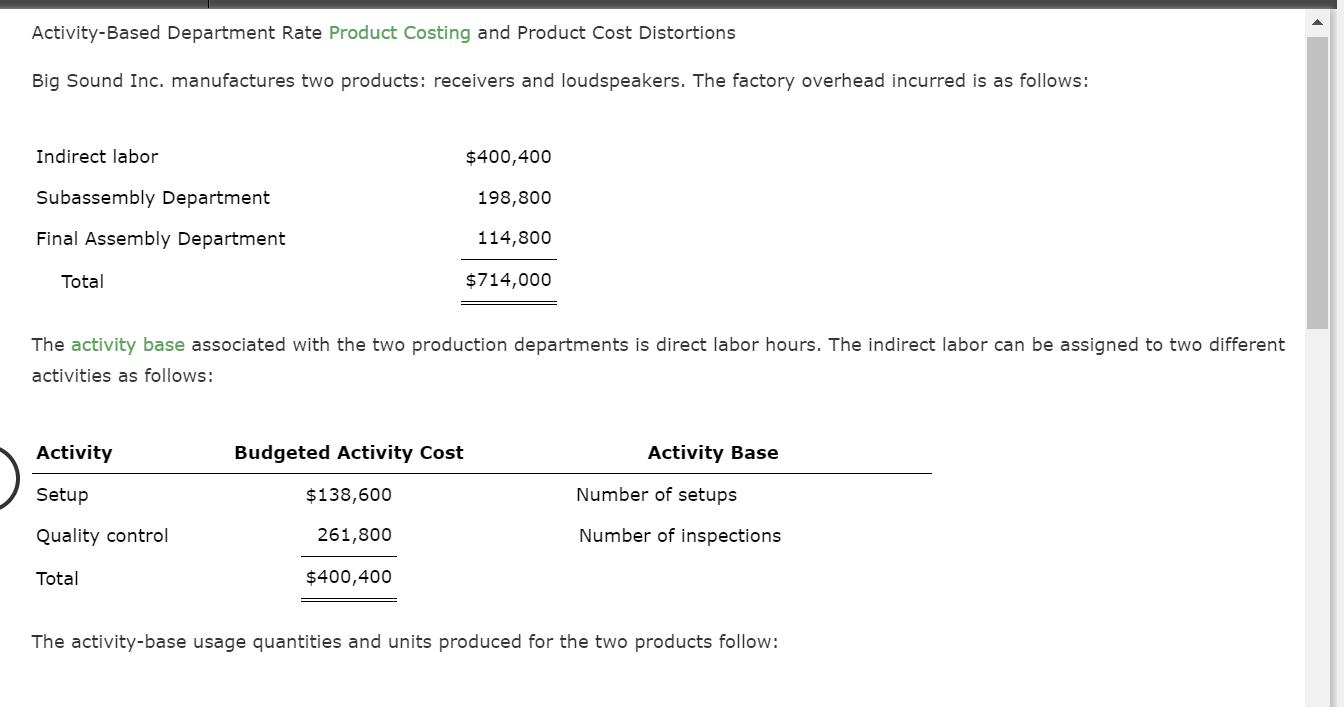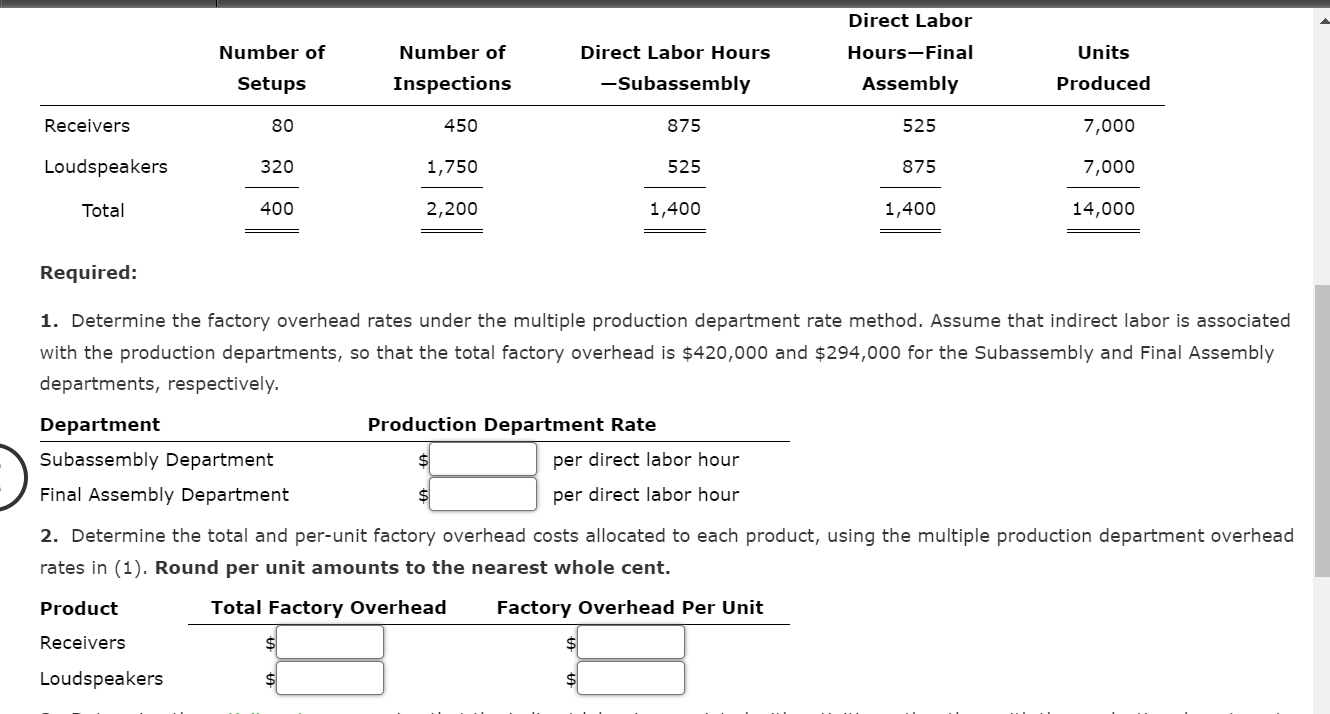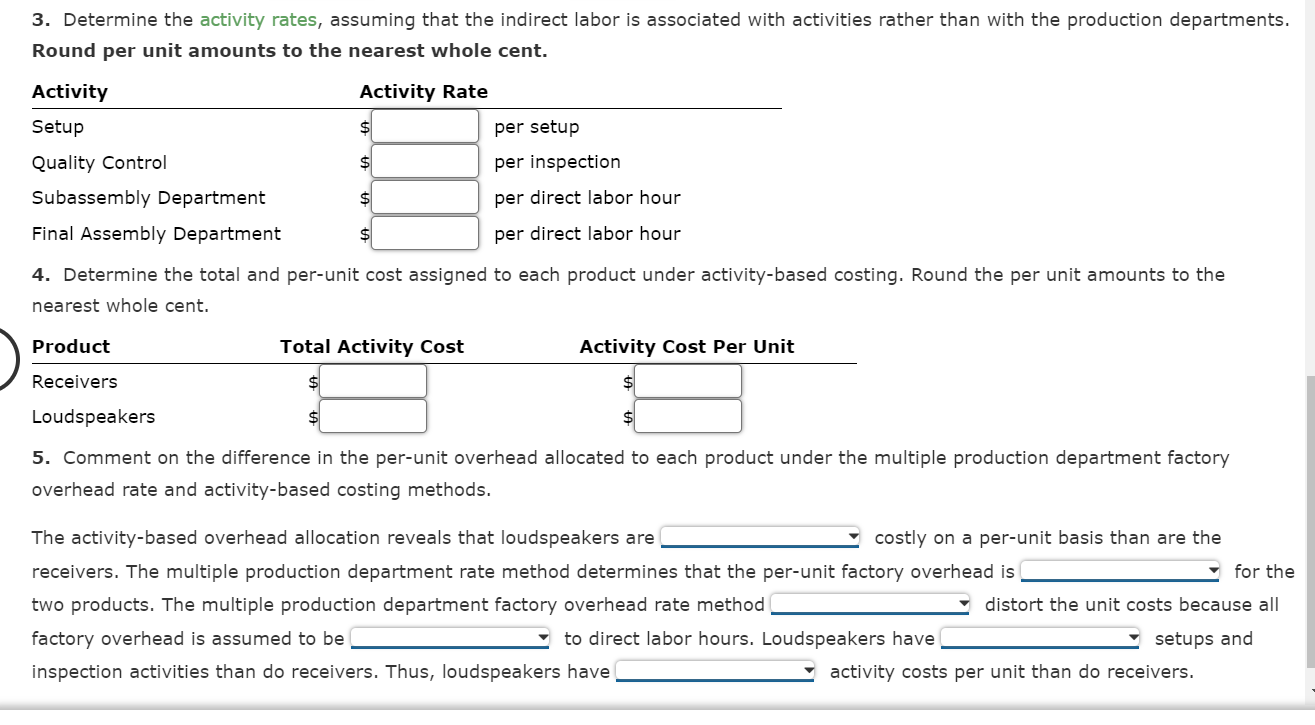


Activity-Based Department Rate Product Costing and Product Cost Distortions Big Sound Inc. manufactures two products: receivers and loudspeakers. The factory overhead incurred is as follows: Indirect labor $400,400 Subassembly Department 198,800 Final Assembly Department 114,800 Total $714,000 The activity base associated with the two production departments is direct labor hours. The indirect labor can be assigned to two different activities as follows: Activity Budgeted Activity Cost Activity Base Setup $ 138,600 Number of setups Quality control 261,800 Number of inspections Total $400,400 The activity-base usage quantities and units produced for the two products follow: Direct Labor Direct Labor Hours Hours-Final Number of Setups Number of Inspections Units Produced -Subassembly Assembly Receivers 80 450 875 525 7,000 Loudspeakers 320 1,750 525 875 7,000 Total 400 2,200 1,400 1,400 14,000 Required: 1. Determine the factory overhead rates under the multiple production department rate method. Assume that indirect labor is associated with the production departments, so that the total factory overhead is $420,000 and $294,000 for the Subassembly and Final Assembly departments, respectively. Production Department Rate Department Subassembly Department Final Assembly Department per direct labor hour per direct labor hour 2. Determine the total and per-unit factory overhead costs allocated to each product, using the multiple production department overhead rates in (1). Round per unit amounts to the nearest whole cent. Product Total Factory Overhead Factory Overhead Per Unit Receivers Loudspeakers $ 3. Determine the activity rates, assuming that the indirect labor is associated with activities rather than with the production departments. Round per unit amounts to the nearest whole cent. Activity Rate Activity Setup Quality Control Subassembly Department Final Assembly Department $ per setup per inspection per direct labor hour $ $ per direct labor hour 4. Determine the total and per-unit cost assigned to each product under activity-based costing. Round the per unit amounts to the nearest whole cent. Product Total Activity Cost Activity Cost Per Unit Receivers $ Loudspeakers 5. Comment on the difference in the per-unit overhead allocated to each product under the multiple production department factory overhead rate and activity-based costing methods. The activity-based overhead allocation reveals that loudspeakers are costly on a per-unit basis than are the receivers. The multiple production department rate method determines that the per-unit factory overhead is for the two products. The multiple production department factory overhead rate method distort the unit costs because all factory overhead is assumed to be to direct labor hours. Loudspeakers have setups and inspection activities than do receivers. Thus, loudspeakers have activity costs per unit than do receivers









